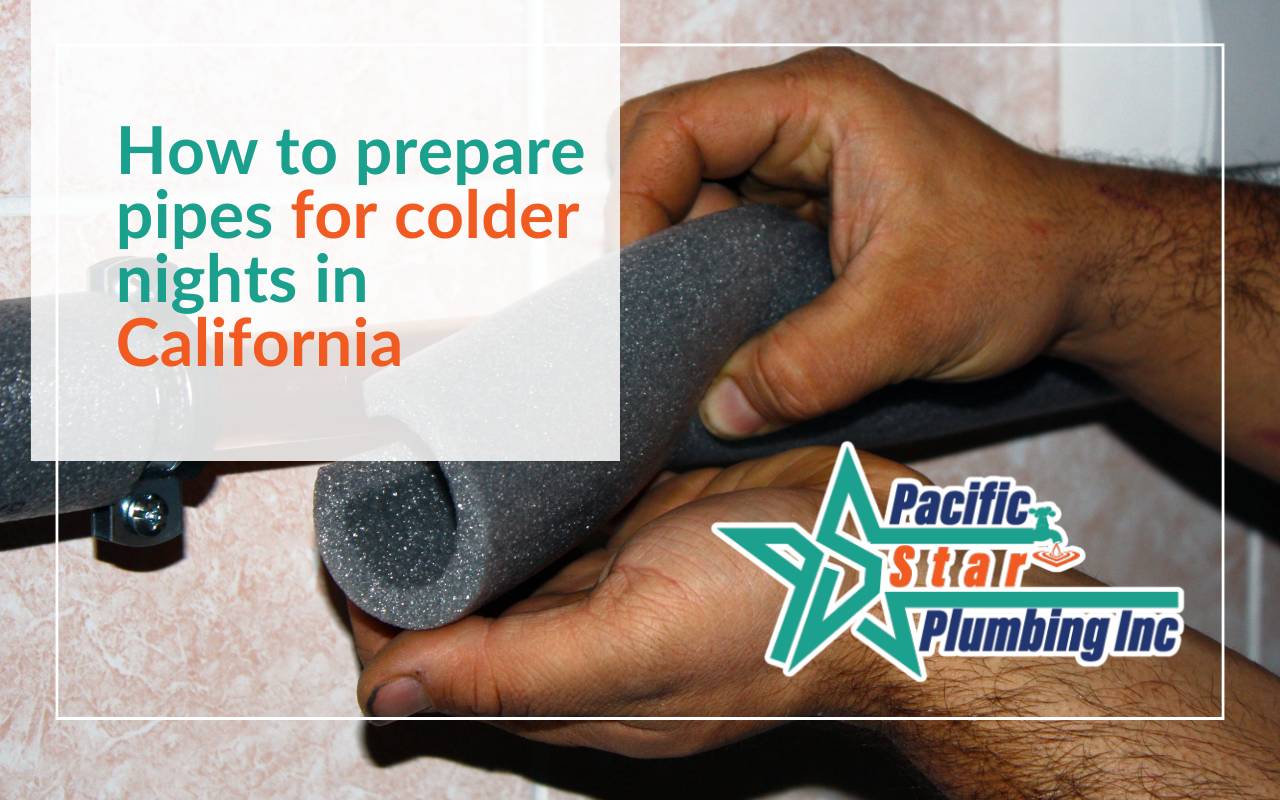Blog

How to prepare pipes for colder nights in California
Navigate through the unpredictable weather patterns in California, where chilly nights can sneak up unexpectedly, catching many homeowners off guard. As temperatures dip, the risk of frozen pipes becomes a reality that can lead to costly repairs and water damage.
Understanding how to prepare pipes for colder nights is crucial in safeguarding your home from the cold. With a few practical steps like pipe insulation and outdoor faucet protection, you can ensure your home stays safe and dry, even on the frostiest evenings.
Delve into the importance of fall pipe maintenance, a crucial yet often overlooked aspect of home care. As autumn leaves begin to fall, dedicating some time to prepare your pipes can save you from the headache of dealing with burst pipes.
By taking preventative measures now, you'll not only protect your investment but also gain peace of mind throughout the colder months. This blog post will guide you through straightforward and effective strategies to keep your pipes safe and secure, regardless of what nature throws your way.
Understanding the Risks of Frozen Pipes in California
Recognizing why frozen pipes pose a serious threat is the first step in learning how to prepare pipes for colder nights. Even though California is known for mild winters, certain regions—especially mountainous or inland valleys—can experience sudden temperature drops.
When water trapped inside a pipe freezes, it expands and exerts tremendous pressure, which can cause the pipe to crack or burst. A single burst pipe can release hundreds of gallons of water in a short period, leading to damage to floors, walls, and personal belongings.
Common Areas Most at Risk:
Crawl spaces and basements: Typically unheated and highly exposed to cold air.
Garages and attics: Often overlooked during insulation upgrades.
Exterior walls: Pipes running near outside walls lose heat faster.
Outdoor plumbing lines: Hoses, spigots, and irrigation systems are most vulnerable.
By recognizing these risks, homeowners can make smarter choices and schedule timely fall pipe maintenance. This proactive approach saves money on emergency repairs and prevents interruptions to daily routines.
Importance of Fall Pipe Maintenance
Preparing your plumbing system before the cold sets in is a key strategy for preventing frozen pipes. Fall pipe maintenance involves inspecting, cleaning, and securing your plumbing so it can withstand sudden temperature dips.
Skipping this step often leads to rushed fixes in the middle of winter when professional help may be in high demand and repair costs can skyrocket. Regular upkeep builds a habit of checking your plumbing’s health at least once a year.
Essential Fall Maintenance Tasks:
Inspect visible pipes: Look for leaks, rust, or loose fittings.
Test outdoor faucets: Make sure they drain properly and aren’t holding water.
Seal cracks and gaps: Close openings where cold air can reach pipes.
Check insulation: Replace worn-out or missing insulation sleeves.
Flush water heaters: Remove sediment to maintain heating efficiency.
By incorporating these checks into your autumn routine, you’re investing in long-term peace of mind and ensuring your plumbing performs efficiently through winter.
Signs of Vulnerable Pipes to Cold Weather
Spotting early warning signs helps you prioritize which areas need attention. Listen for dripping sounds, check for frost on exposed pipes, and feel for unusually cold sections along the pipe run.
Leaks, stains on walls, or peeling paint around plumbing lines indicate weak spots that may fail during a cold snap. If you find these signs, reinforce insulation and address any damage before temperatures drop further.
Insulating Exposed Pipes Indoors and Outdoors
Protecting exposed pipes is one of the most effective ways to prevent freezing. Indoor pipes in attics, garages, and crawl spaces can be wrapped in foam sleeves or rubber tubing for insulation.
For outdoor or in-garage pipes, use thicker, weather-resistant insulation and secure it tightly with cable ties or duct tape. Seal small gaps with insulation tape or foam sealant to create a continuous barrier against the cold.
Protecting Outdoor Faucets from Freezing
Outdoor faucet protection is essential during chilly California nights. Frost-free spigots, or freeze-proof hose bibs, extend the valve inside your home’s heated area.
Steps to Protect Outdoor Faucets:
Install frost-free spigots: Prevent freezing at the source by keeping the valve warm.
Use insulated faucet covers: Foam covers trap warmth around the faucet head.
Disconnect garden hoses: Attached hoses trap water that can freeze and expand.
Shut off exterior water lines: Drain all remaining water before a cold night.
These quick and simple steps protect outdoor faucets and connected pipes from bursting under pressure caused by frozen water.
Utilizing Heating Tape for Added Protection
Heating tape acts like an electric blanket for your pipes. Wrap it around vulnerable pipes, plug it in, and it provides consistent warmth to prevent freezing.
Opt for thermostatic heating tape that automatically turns on when temperatures drop below a set level. This self-regulating design conserves energy while offering reliable protection through fluctuating temperatures.
Draining and Disconnecting Outdoor Water Sources
Emptying water from outdoor lines is a simple but crucial step in fall maintenance. Shut off water supply valves leading to exterior faucets, then open faucets fully to drain any remaining water.
Don’t forget to clear irrigation systems and pool lines. Use drain valves or compressed air to remove trapped water that could freeze and cause damage later.
Checking for Leaks and Repairing Insulation
Once pipes are insulated, double-check for leaks. Run water through all faucets and inspect visible sections for drips or wet spots.
Even a slow leak can freeze and expand into a bigger problem. Tighten fittings, replace worn washers, and repair any damaged insulation to keep cold air out and heat in.
Emergency Preparedness for Sudden Temperature Drops
Even with proper preparation, unexpected temperature drops can occur. Keep supplies ready for quick action if freezing starts to occur.
Emergency Items to Keep on Hand:
Pipe repair clamps: Temporarily stop leaks until professional help arrives.
Portable heaters: Provide warmth to unheated spaces during a freeze.
Hairdryer or heating pad: Gently thaw small frozen sections safely.
Insulation materials: Foam wraps and tape for emergency sealing.
Locate your main water shutoff valve before an emergency happens. Knowing how to shut off the water quickly can minimize damage from a burst pipe.
Concluding Tips for Long-Term Pipe Protection
Regular fall maintenance is your best defense against frozen pipes in California. Consistent care ensures insulation remains effective and outdoor faucets stay secure.
By addressing vulnerabilities early, you can prevent costly repairs and avoid water damage during unexpected cold snaps. Stay prepared, and your home will remain comfortable and dry all season long.
For more information about expert assistance, explore our Services page or Contact our team today for personalized plumbing solutions.

We Cover Areas
Aliso Viejo, CA
Irvine, CA
Laguna Hills, CA
San Clemente, CA
CONTACT uS
San Juan Capistrano, CA
Monday Through Friday, 8:00 a.m. to 5:00 p.m.
Cash, Venmo, Zelle and Credit & Debit Cards

@ 2025 - Pacific Star Plumbing INC| All Rights Reserved






